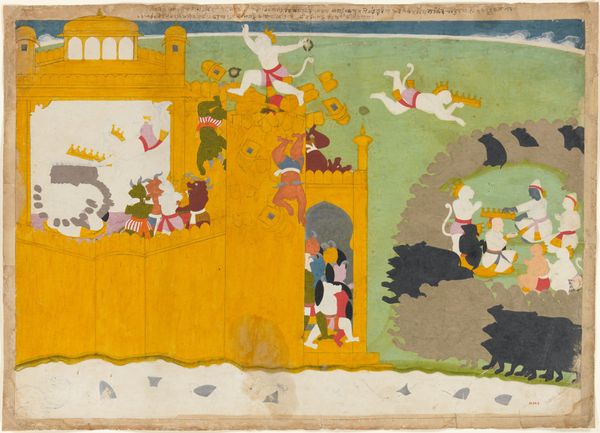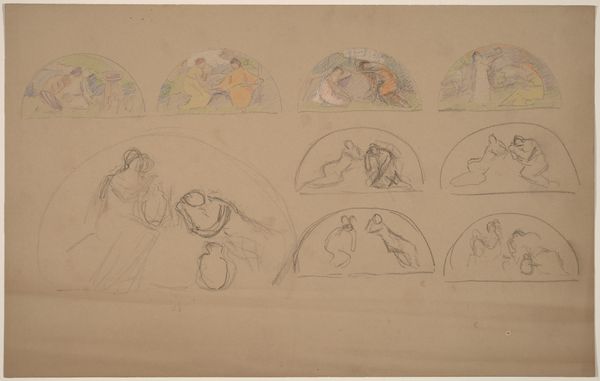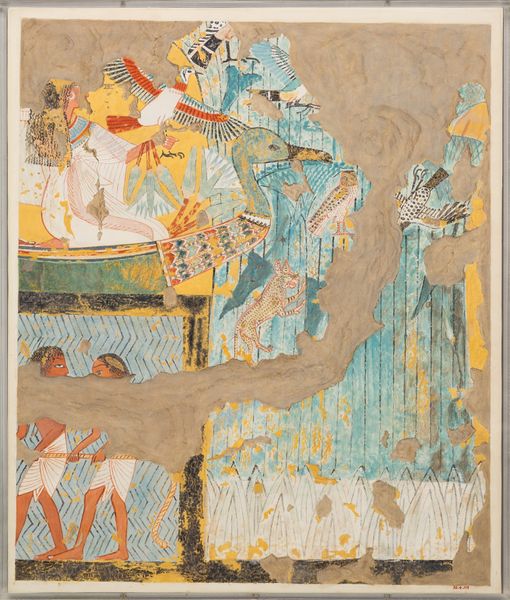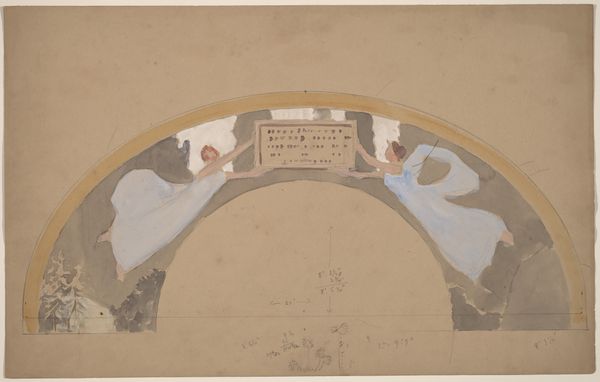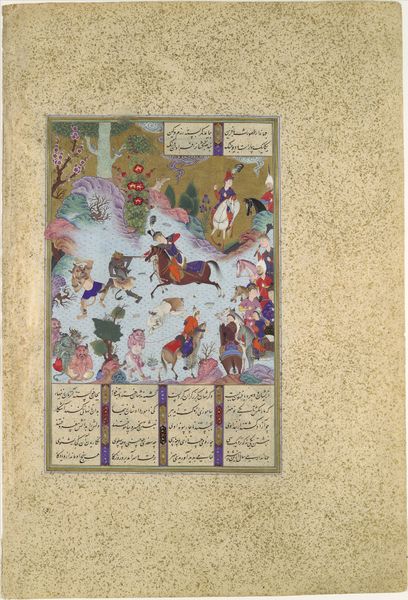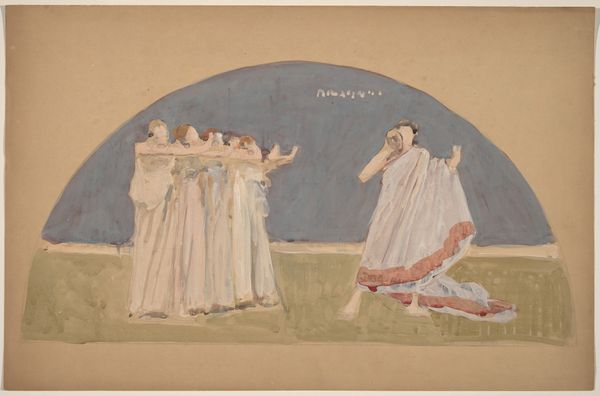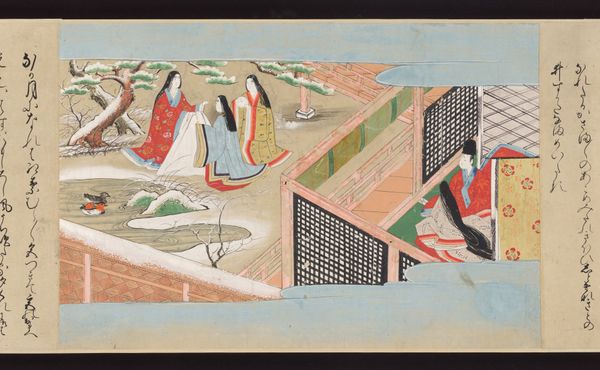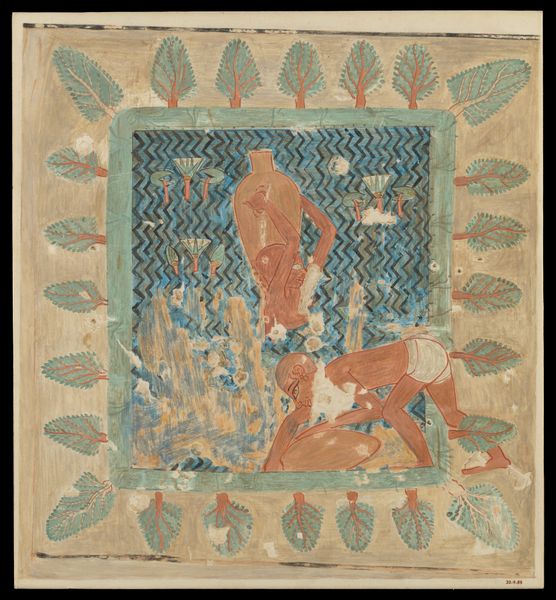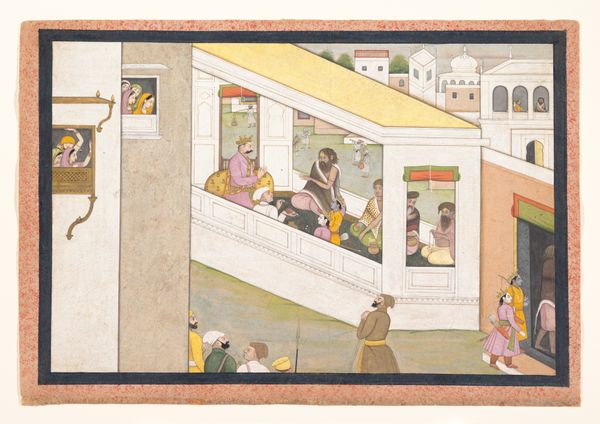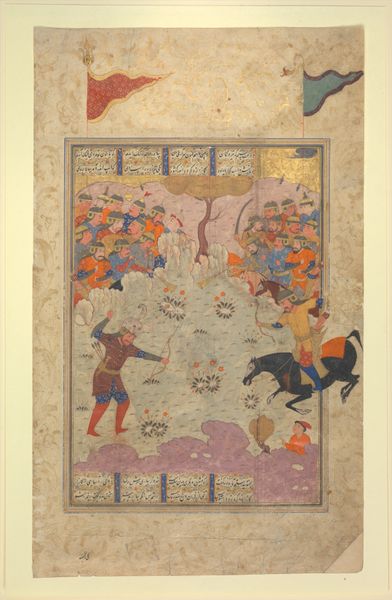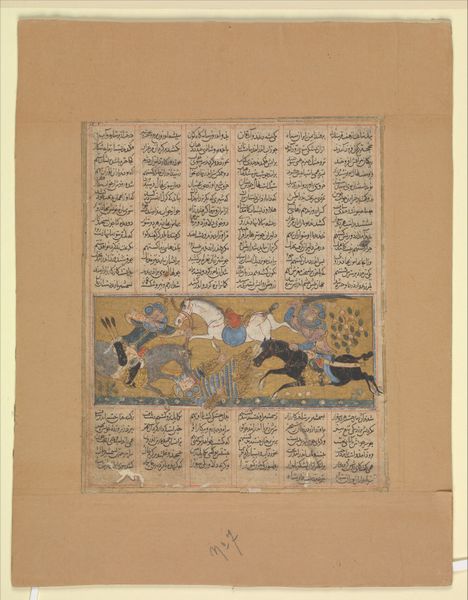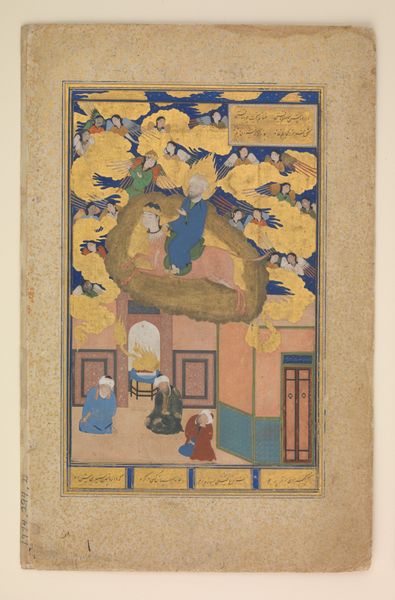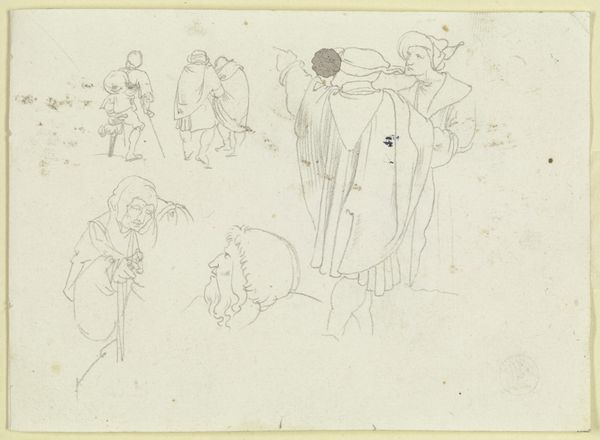
Dimensions: sheet: 48.9 x 31.8 cm (19 1/4 x 12 1/2 in.)
Copyright: National Gallery of Art: CC0 1.0
Charles Sprague Pearce made these watercolor studies for lunettes on paper. Here we see his early concepts for a series of semi-circular paintings, likely intended for a public building or institution. Pearce was an American expatriate painter working in France during the late 19th century. The sketches depict allegorical scenes of everyday life: marriage, religion, labor, the arts. Each scene is carefully composed, with figures arranged in classical poses within the shallow, stage-like space. We might ask ourselves, what vision of modern life is Pearce trying to convey here? Is he reflecting on the progressive social movements that shaped the period? Or is he celebrating more traditional values? To fully understand Pearce's aims, we would want to investigate the social and cultural context in which he was working: the history of mural painting in France, the role of art academies, and the political debates surrounding public art. Only then can we understand the true meaning of these studies and their place in the history of art.
Comments
No comments
Be the first to comment and join the conversation on the ultimate creative platform.
